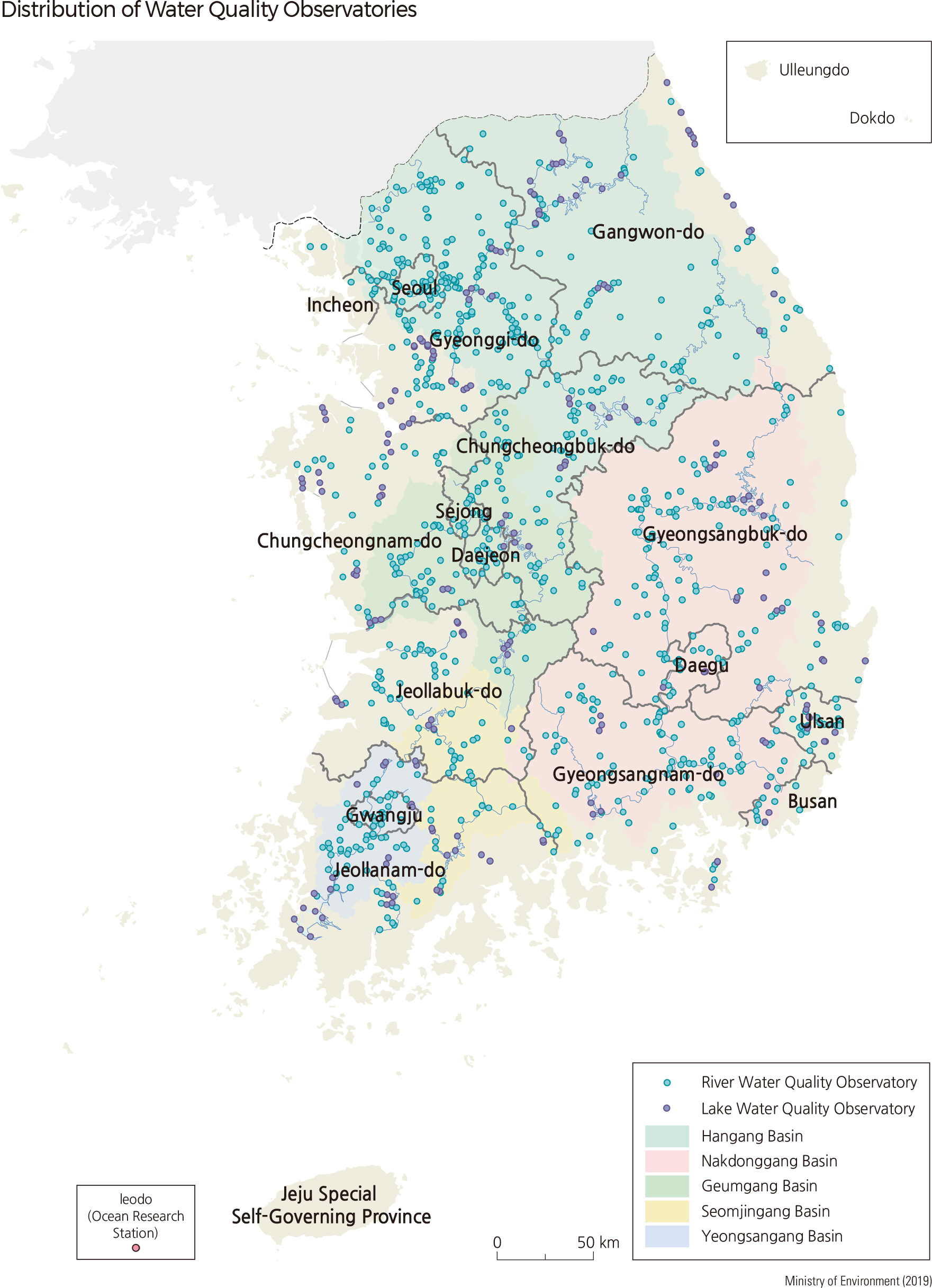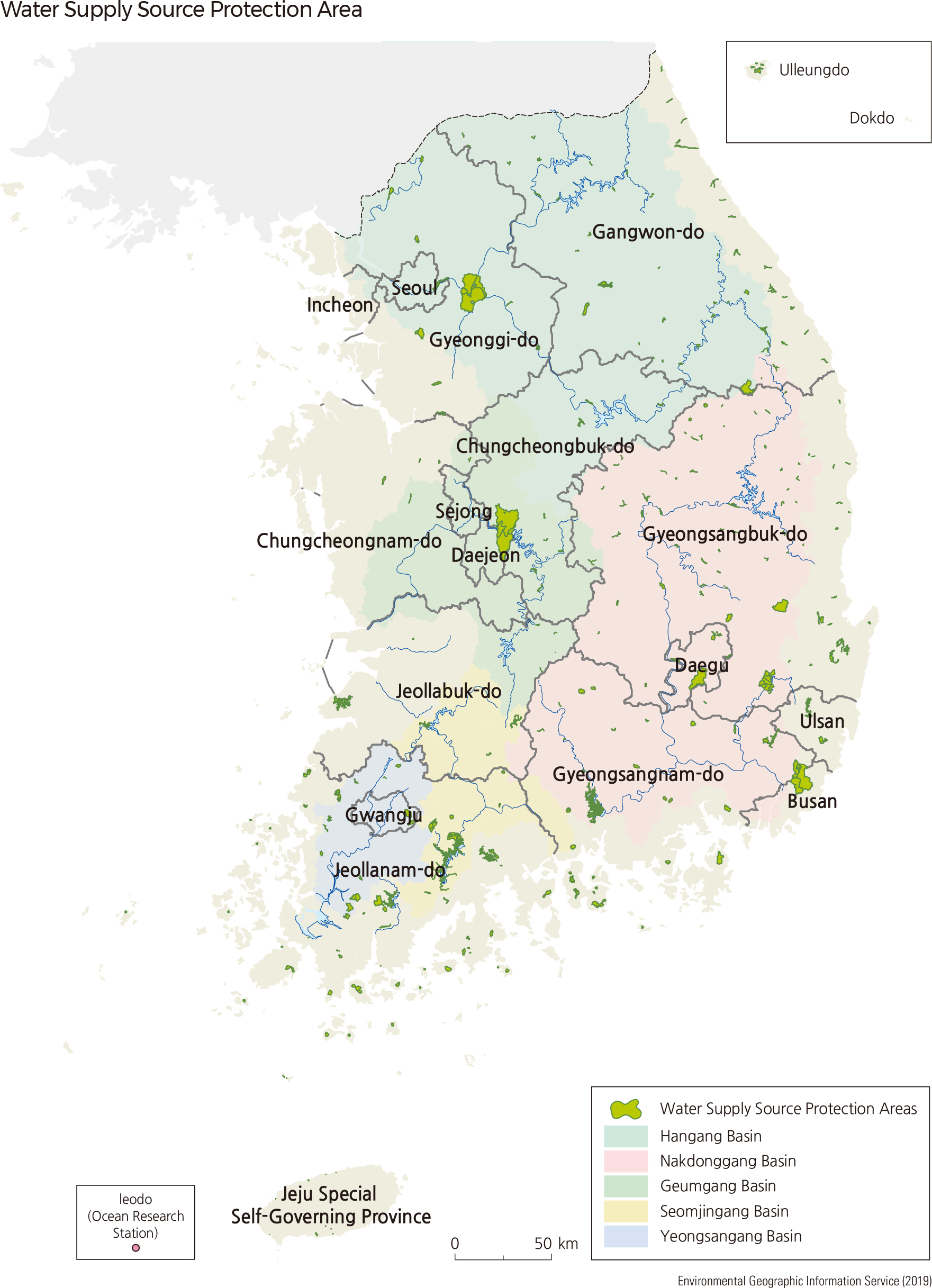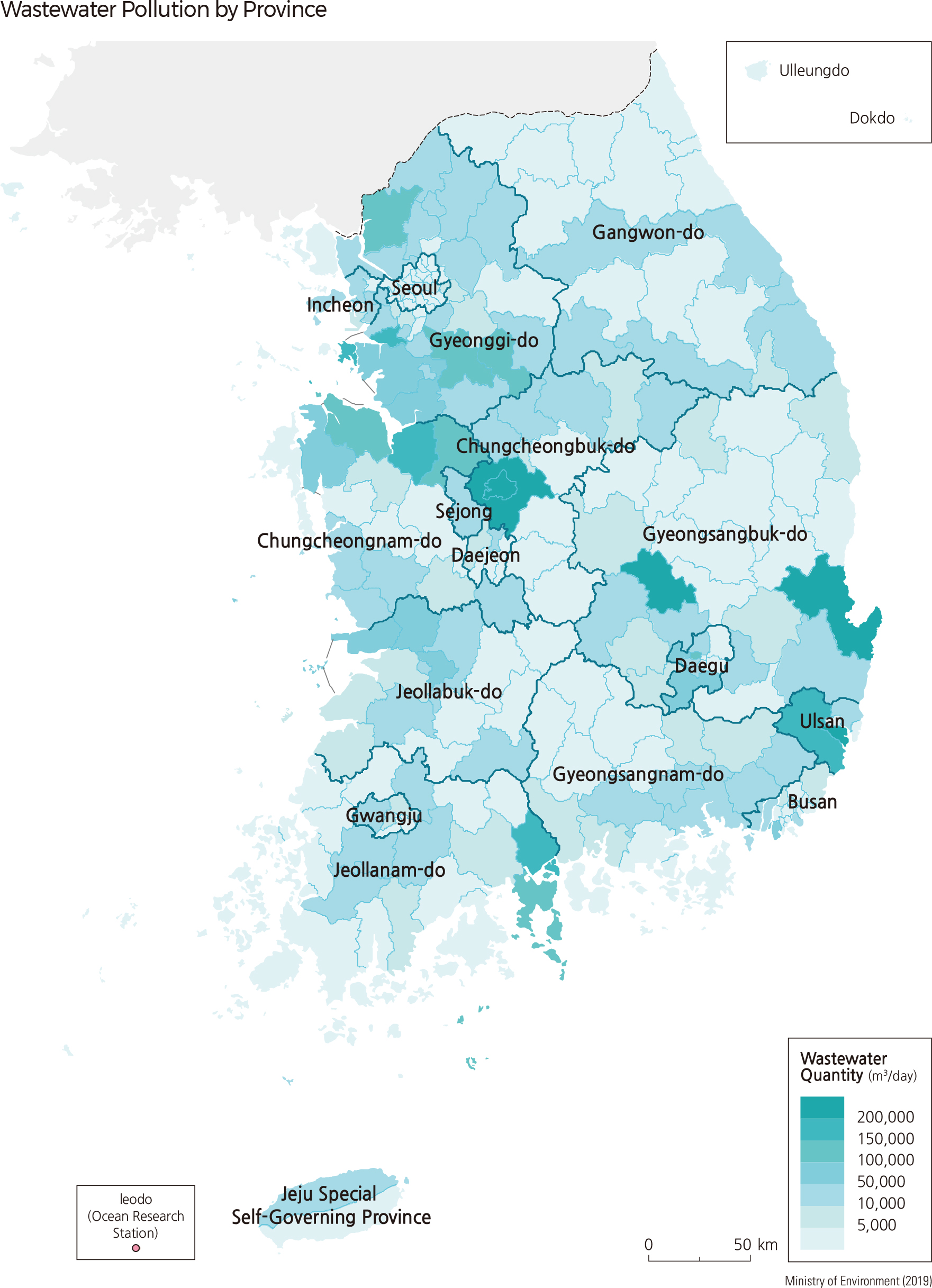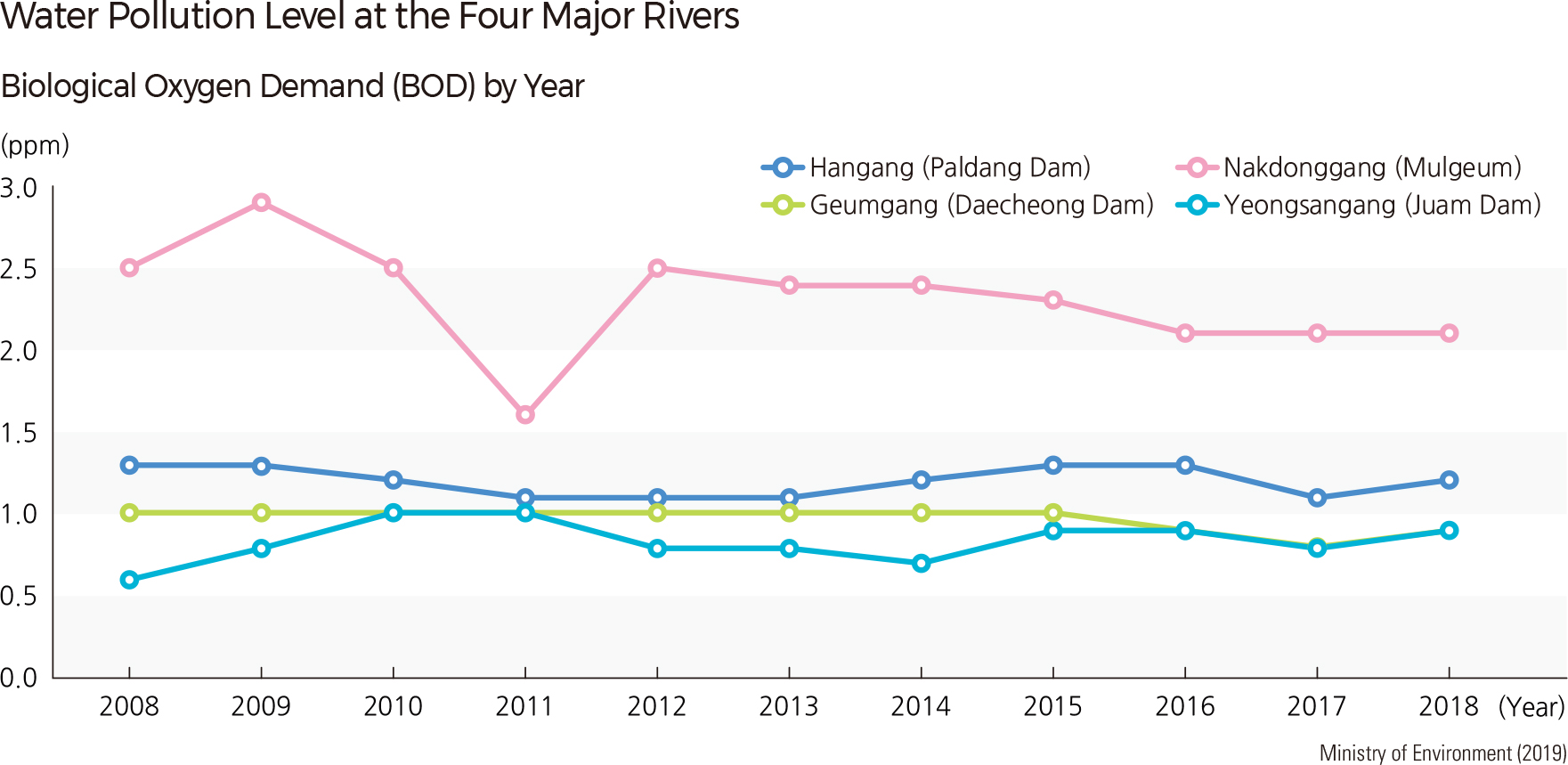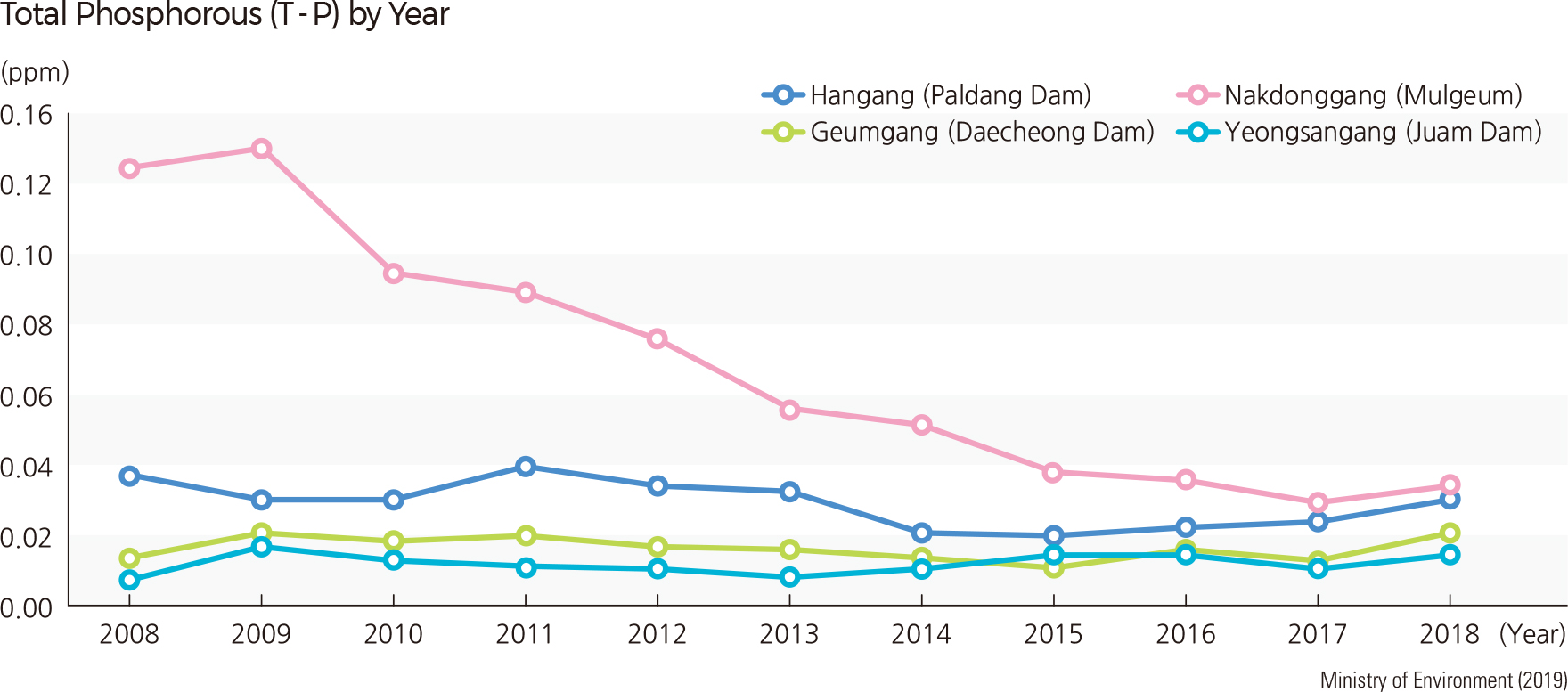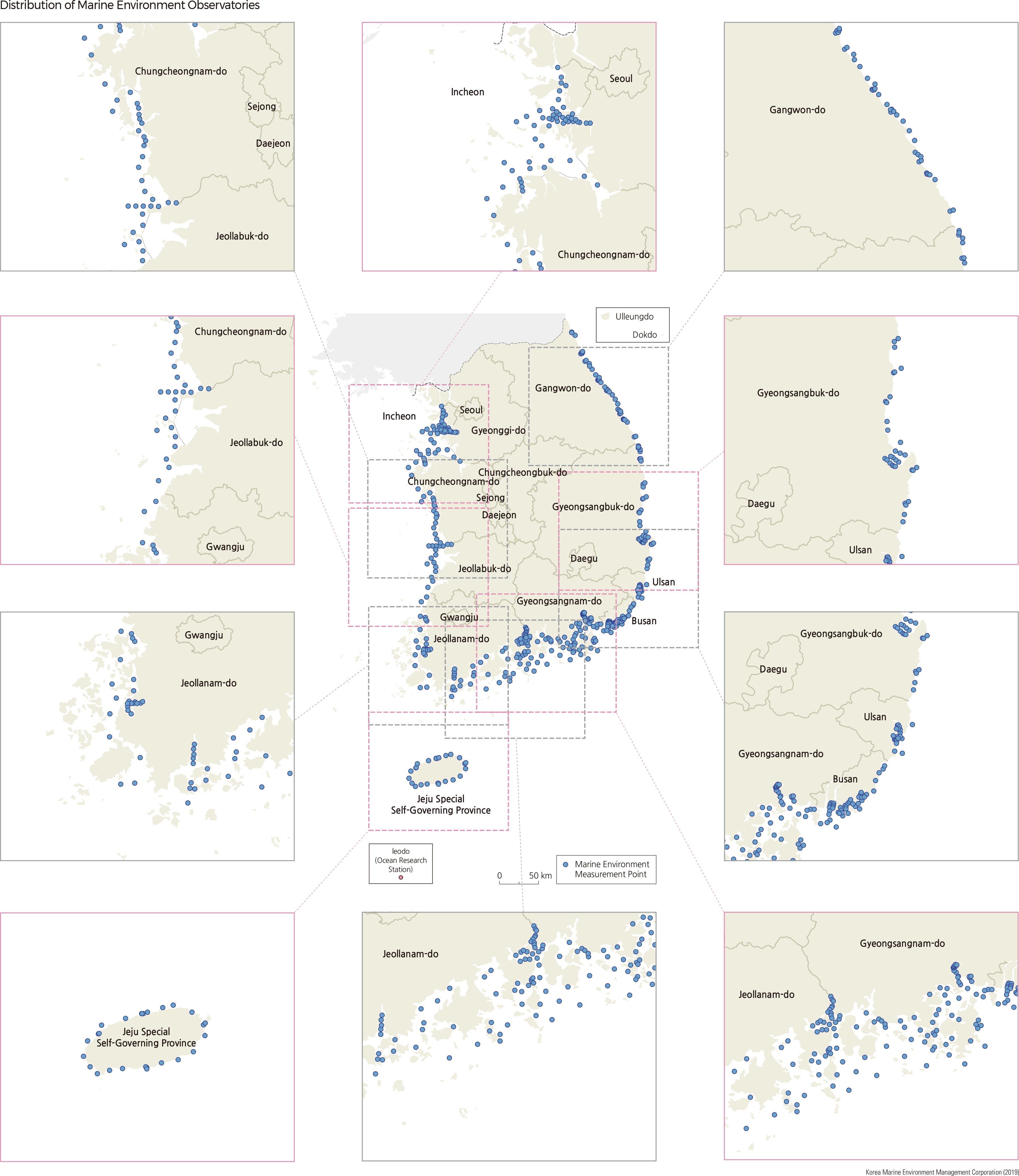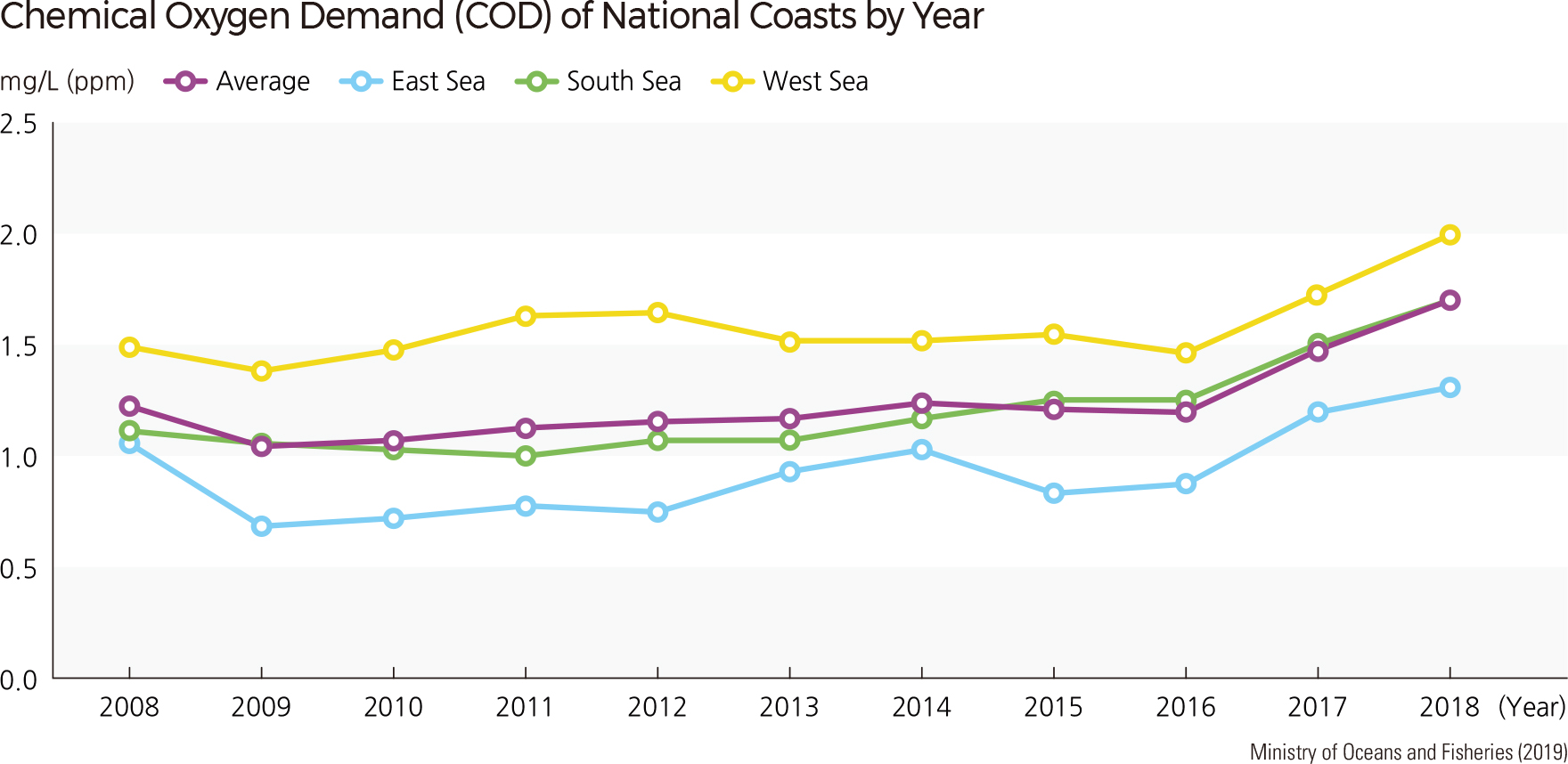English II 2020
The water quality monitoring network is operated to understand the status of water quality and aquatic ecosystems in public water bodies such as rivers and lakes. As of 2019, water quality monitoring is carried out at a total of 2,249 sites. Data on water pollution are publicized through the "Water Resources Management Information System" (www.wamis.go.kr). Also, to protect the water quality of the water source, a water-source protection area with a total area of 1,136 ㎢ is designated under the Water Supply and Waterworks Installation Act. Discharges of hazardous chemicals, waste, sewage, and excreta are prohibited at the site. As a result of these efforts, the water quality of the four major rivers is gradually improving, while biochemical oxygen demand (BOD) and total phosphorus (T-P), which are indicators of eutrophication, are decreasing. The amount of wastewater is low around Yangpyeong-gun, Gyeonggi-do, in the Han River basin. It is relatively high in Nam-gu of Ulsan and Gumi of Gyeongsangbuk-do, which were excluded from the protected area.
South Korea regularly monitors its marine environment and conditions of coastal waters, as well as the sources of marine pollution. The marine environment monitoring network aims to comprehensively understand the marine environment, and the collected information is used to establish national management and conservation policies.
This monitoring network comprises four different network types: coastal ports, offshore ports, environmental management waters, and estuaries. The monitoring is carried out in February, May, August, and November of every year at a total of 425 stations. The automatic network of seawater quality monitoring collects data from Sihwaho, Masanman, Ulsanman, Yeosu New Harbor, and the coastal areas of Busan to measure the water quality of estuaries and pollution hot spots and to monitor coastal pollution. The information from these monitoring networks is provided through the "Marine Environment Information System" (www.meis.go.kr). In the last two or three years, coastal pollution has increased steeply. |
